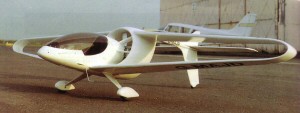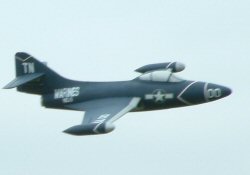|
|||
|
|
|
||
| View Shopping Cart |
| Home |
| Guides Available |
| About the Author |
| FAQs |
| Testimonials |
| Articles |
| Contact Andrew |
| Terms & Conditions |
| Mailing List |
| Links |
 |
 |
Get more high quality electric modeling information, absolutely free:
Sign up for the Gibbs Guides newsletter now!
Electric Flight Glossary
& discussion of electric flight terms
Part 2 - E to K
by Andrew Gibbs
There are many technical terms and words relating to model
aircraft in general, and electric flight in particular.
The aim of this detailed glossary is therefore to offer
an accurate and detailed yet concise explanation for any
of the terms the electric modeller is likely to come across.
Let us know if a term you'd like to see covered is not
discussed here!

Electric Ducted Fan (EDF)
EDF is short for Electric Ducted Fan. A ducted fan is a small diameter
multi-bladed fan (more properly called an impeller) which is driven
at very high rpm to be able to supply sufficient thrust. The EDF unit
is located within the airframe and is used to provide propulsion for
scale (and non scale) jet models. Today, there are many practical EDF
models available, which can perform very well thanks to LiPo batteries
and brushless motors.
Efficiency
Efficiency is the term used to define the ratio of output power to input
power. For example, if an electric motor receives 100 Watts of input
power, and delivers 70 Watts of power to its shaft, it is 70% efficient.
The remaining 30 Watts are lost producing heat within the motor.
Electric Motor
The purpose of an electric motor is to convert electrical
energy from the battery into mechanical energy. Electric
motors for model aircraft come in two type; brushed
and brushless. Each of these has its own entry.
Electricity
Electricity may be thought of as a flow of electrons within a wire.
Electricity is conventionally said to flow from positive to negative.
However, in reality the electrons flow the other way but for practical
purposes we can ignore this in our modeling work.
This
beautiful EDF Grumman F9F Panther is the work
of Neil Jarvis |
Electronic
Speed Controllers (ESCs) offer fully proportional
control of the motor. |
ESC
ESC is an abbreviation for Electronic Speed Controller.
The ESC is a small, lightweight unit positioned between
the battery and the electric motor, which allows the
speed of the motor to be controlled electronically by
the RC system. Proportional control is available from
off all the way to full power. Aircraft ESCs are forwards
only, while those for surface vehicles incorporate a
reverse function. The ESC also connects to the engine/motor
channel of the receiver to receive its instructions.
ESCs come in two types, brushed, which are suitable for brushed motors only, and brushless, suitable only for brushless motors. Both are very simple to install, set up and use. The basic principle of operation, which both types employ, is to control the motor by rapidly chopping the battery voltage into ‘on’ and ‘off’ pulses of varying length. The ESCs output is thus only ever ‘full on’, or ‘off’. However, this pulsing occurs many thousands of times a minute, the result being that the voltage at the motor is effectively the average of the on and off pulses, so control appears smooth and proportional.
ESCs are examined in more detail in the guide More Than Motors, available here
Exponential (Expo)
Normally, a servo will move in proportion to
the amount the transmitter stick is moved. The exponential
function allows the relationship between transmitted stick
movement and the response of the servo to be modified.
The most common application of exponential is to to make
the servo less responsive around the neutral point. This
can make it easier to control the model accurately when
only small control deflections are required.
Ferrite magnets
Ferrite magnets are iron based magnets, commonly found
in inexpensive motors. Ferrite magnets are relatively
weak.
Flux ring
A flux ring is a ring of iron rich metal which is shaped
to fit over the outside of a ferrite magnet can motor.
It is sometimes called a stator ring, since it fits around
the case which constitutes the stator (non-moving part)
of the motor. Ferrite magnets are not especially powerful,
but the presence of a flux ring slightly increases the
strength of the magnetic field. This alters the operating
characteristics of the motor so that it becomes a slightly
lower rpm, and slightly higher torque device.
The
blades of a folding propeller fold backwards when
the motor is stopped, reducing drag. |
This '400 size'
brushed motor has had its flux ring removed for this photograph. |
Folding propeller
A folding prop is one designed to allow the blades to
fold backwards when the motor is stopped in flight. When
the motor is started again, centrifugal force will cause
the blades to return to the unfolded condition. Propellers
with the blades in the folded position offer greatly reduced
drag compared to a stationary unfolded prop. This low
drag condition is beneficial for electric gliders when
gliding. Folding props are also useful for models where
the prop is vulnerable to damage on landing such as models
without undercarriages (gear) or even if landing on rough
ground when the model may nose over.
Gearbox
Most of the motors used in electric flight set-ups are
direct drive, meaning that the output shaft of the motor
drives a propeller directly, at the same rpm as the motor
shaft is turning.
However, in certain cases, a gearbox may be necessary to allow a relatively large propeller to be driven at a lower speed than the motor shaft speed. An example of this is the helicopter, where a small high revving motor can be used to drive a large rotor relatively slowly by the use of a high ratio gearbox. Gearboxes are also in relatively common use for small indoor models.
A gearbox allows a relatively low torque, high rpm motor to successfully turn a relatively large prop requiring a high torque. It can be said that a gearbox allows rpm to be traded for torque. By exchanging torque for RPM, a motor can turn a larger propeller, albeit more slowly.
Gearboxes are usually well over 90% efficient, so the
lost energy is more than made up for by the increased
efficiency of the larger prop.
A gearbox
is seen here, fitted to a Jeti Phasor 45/3 brushless
inrunner motor. |
This
inrunner motor has a high Kv, making it suitable
for a fast revving application such as an EDF model. |
Helicopter
A helicopter is a rotary winged flying machine.
Inrunner Motor
Inrunner motors are a design of brushless motor in which
the rotor, containing the magnets, spins inside the windings.
The inrunner somewhat resembles a traditional brushed
motor. The windings are attached to the inside of the
case, which is fixed, and the necessary commutation function
is carried out by the ESC.
This arrangement of components naturally gives the inrunner a relatively small diameter. The motors are characterised by low torque and high rpm (the opposite of outrunners), making them suitable to turn small props at very high speed. For this reason, inrunner motors are the usual choice for high speed models which require a small prop to be turned at high rpm, and for EDF models.
An inrunner motor may be coupled to a gearbox, allowing it to turn a larger prop. Helicopters commonly use inrunners coupled to a high ratio gearbox to drive a large rotor at relatively low rpm. However, geared inrunners are not often found in fixed wing models, except for very small models, and for competition use where the weight and complexity of a gearbox are considered an acceptable price to gain the benefits of the very high efficiency of an expertly specified and installed inrunner.
You can find a lot more information about brushless motors in the guide Mastering Motors, available here
Iron loss
Iron loss is the name given to one of the causes of a
loss of energy in an electric motor. Iron loss is the
loss of energy caused by the continual movement of a magnetic
field in the motor's iron laminations.
Kilowatt
A kilowatt is one thousand Watts. Watts are a measure
of electric power.
Kv, Kv rating
The term 'Kv' refers to the speed a motor will turn at per Volt in an
off-load (no prop) condition. Thus, a motor with a Kv of 600 supplied
by a 10 Volts will turn at 6,000 rpm. In practice, when a prop is fitted,
the actual rpm will be a bit less than this, perhaps 80 - 85% of the Kv
figure.
You can find a lot more information about Kv and electric motor operation in the guide Mastering Motors, available here
Click here for the next part of the glossary
